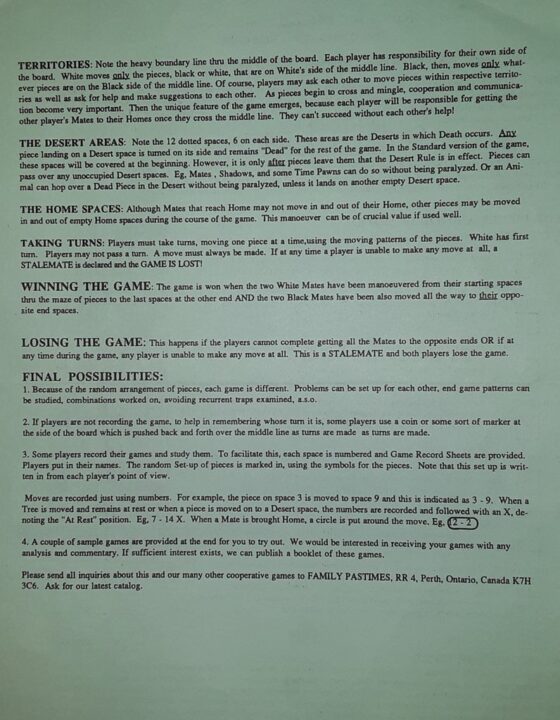Welcome, fellow cardboard adventurers! If you’ve ever wanted to test your puzzle skills, your luck, and your patience (especially if you’re playing against my cousin Kevin who cheats like it’s an Olympic sport), then you might want to stick around for this review. Today I’m giving you the lowdown on a board game that will have you scratching your head and, if you’re like me, maybe the table too. Read on for my honest take, battle-tested with friends who take winning almost as seriously as I take snacks.
How It Plays
Setting up
First, toss out the board and shuffle all the maze tiles—don’t worry, no degree in engineering needed. Place the fixed tiles as shown in the rules, then slide in the loose tiles. Each player picks a pawn and grabs a set of treasure cards. Put your pawn in the matching color corner. Kevin will already try to mess up the setup. Ignore him.
Gameplay
On your turn, you push one row or column with a spare maze tile. This shoves walls, opens paths, and ruins your opponent’s plans. Then, move your pawn as far as you want (or as far as you can) to reach your current treasure. If you get blocked, blame the game, not me. Don’t forget to draw another treasure card when you score one!
Winning the game
First player to collect all their treasures and get back to their home corner wins! Bonus: Get bragging rights for making the best evil laugh as you block your friends. Kevin never wins, but always claims he did.
Want to know more? Read our extensive strategy guide for Maze.
Is Maze a Fair Fight? The Truth About Gameplay Balance
Ah, fairness—the thing my younger brother always claimed was missing when he lost at Monopoly. So, how does maze measure up? Well, after several rounds with friends (ranging from strategic masterminds to people who thought the rulebook was just a serving tray), I can say that maze tries to keep the playing field pretty even. Everyone gets the same starting tools and the layout doesn’t give someone a secret shortcut, unless you count my friend Steve’s magical ability to get lost even when the path is clear.
Maze relies on each player’s spatial skills and planning. The rules make sure it’s not just about who goes first or who has played before. I never saw someone win just because they’d memorized the box art or had “maze experience” in their resume. If you’re clever and can spot a path quicker than the others, you’ll usually do well. But, and this is a big but (not unlike my uncle Bob after Thanksgiving), some mazes can get a bit easier for certain players if the random tile draw gives them a simple route. This doesn’t ruin the game, but it can make a couple of rounds feel a bit wonky.
On the whole, maze keeps things pretty fair and square, even if you’re the type to turn the board upside-down when you lose. Get ready, though—next I’ll talk about how much luck is involved in this brainy game. Spoiler: It’s not all brains.
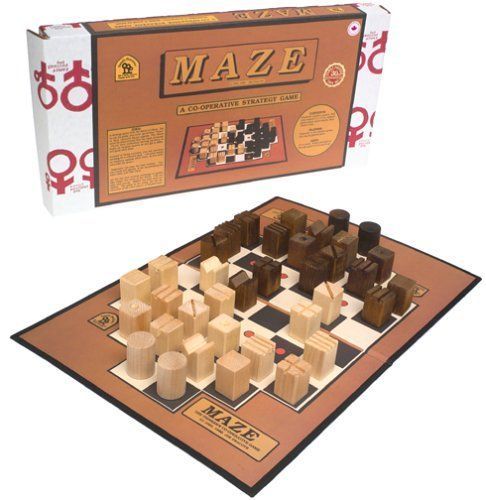
How much luck is involved in Maze?
Let me set the scene. I’m sitting with my friends, holding a mug of very average coffee, staring at the ‘maze’ board like it just insulted my cat. Why? Because the game might make you believe you’re a genius one minute, then in the next round, CHAOS. Luck, my old enemy, peeks around every cardboard corner in Maze.
The main thing you’ll notice is the randomness when tiles get shuffled and placed. I have played Maze with my friend Greg, who has all the strategic skills of a goldfish, and somehow, Greg won more than once. He just happened to stumble onto the right tiles at the right time! I couldn’t decide if I should be impressed or just throw Greg and the game out the window. (I did neither, in case you were worried.)
Sure, you can plan and try to outsmart the others. But the truth is, sometimes you get blocked, and other times you get a lucky path straight to your target. There’s no skill in shuffling—unless you count my friend Alice’s suspiciously good shuffling. Some might call that magic, but I’m calling it pure, unfiltered luck. If you love games where the best player always wins, Maze might annoy you. But if you’re fine with a dash (or a whole cup) of luck, this one’s wild and unpredictable—in a good way. Most of my group laughed through the chaos, even if some winces were very real.
Now, if you’re wondering whether all this madness means Maze isn’t challenging or fun, buckle your seatbelt. The next section takes us into the heart of the Maze experience: is this game actually fun, or is it just cardboard chaos? Let’s find out!
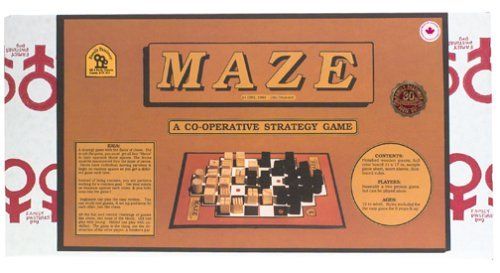
Is Maze Challenging and Fun to Play?
Let me tell you about Maze: this game will twist your brain like a pretzel at a carnival. When I played Maze with my friends, we weren’t just fighting over who ate the last chip—we were trying to predict each other’s moves and outwit the board itself. That feeling when you finally figure out the shortest path, right before someone else changes the layout, is a mix of victory and, honestly, deep betrayal. You’ll spend half the game thinking you’re a genius, the other half stuck in the corner muttering at plastic tiles.
Maze has a good mix of easy turns and those “I-need-three-minutes-to-think” moments. The rules are simple, but actually pulling off a win can be tough, especially with clever opponents (or sneaky little brothers). The fun cranks up when everyone tries to block each other and makes weird noises when they move their pieces. I laughed a lot during our games, mostly out of stress and panic. It never gets boring, since each game feels different with the maze shifting under your feet—kind of like my sense of direction in IKEA.
I do wish there were a few more ways to use your brainpower and less time spent hoping for lucky tile flips. But overall, Maze is challenging enough to feel rewarding and fun enough to keep people coming back, even if you lose (which I totally didn’t, by the way).
Next up, I’ll talk about the quality of the components and the replay value—let’s see if Maze is as sturdy as it is devious!
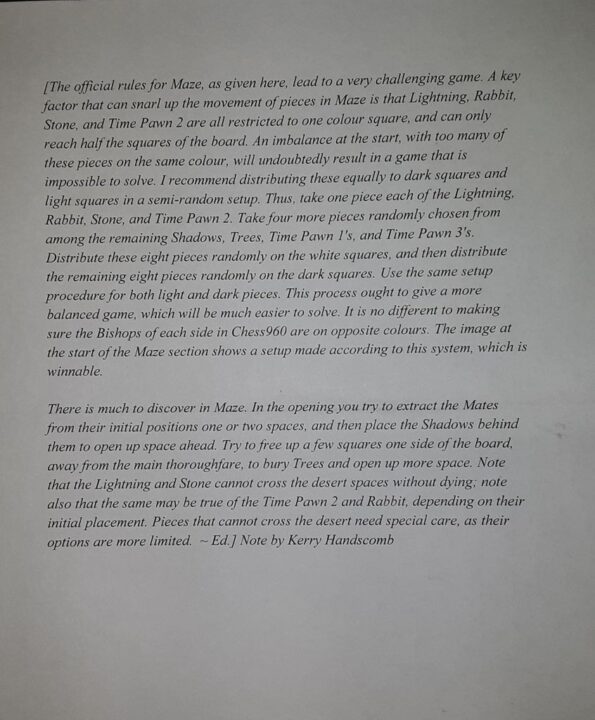
Quality of Components and Replay Value in Maze
Let’s talk about the stuff you actually touch in Maze. You know, the bits and bobs that either make you love a game or regret inviting your cousin Kevin over. The box for Maze feels sturdy enough to survive a night in a backpack or a slightly tipsy tumble off the table (ask me how I know). The tiles snap together neatly and the colors are bright, so you won’t mistake your path for your cat’s hairball—unless you have a very stylish cat.
Now, the cards in Maze? They’re not as thick as my nan’s glasses, but they’re decent. I’ve played five rounds in one night, and there wasn’t a single bent corner or accidental smoothie stain. That’s a win in my book. The rulebook is clear with no mysterious instructions that make you question your understanding of English.
Replay value is where Maze really shines, even brighter than a flashlight after a blackout. With the board changing every game, no two matches play the same. My friends and I started getting creative, inventing silly house rules like, “You must use your non-dominant hand for the second half.” Trust me, things got weird—in a good way. You can finish a game in under 30 minutes, so it’s easy to convince people for a rematch (just watch out for the sore losers in your group).
Do I recommend Maze? Absolutely, if you like games you can play over and over without memorising the solution. It’s not perfect, but it’s good value and, most importantly, fun enough to make you come back for more. Just don’t play with Kevin. He cheats.
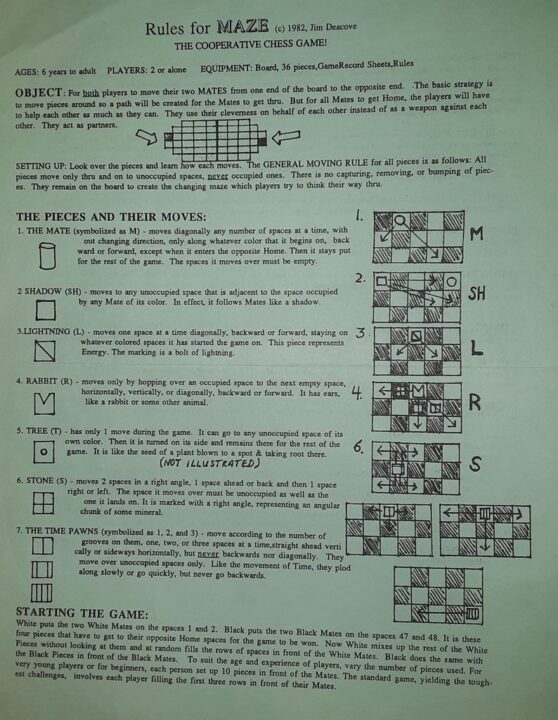
Conclusion
Well, that wraps up my review of Maze. It’s a brain-teaser with solid bits and plenty of moments that’ll have you yelling at the table (in a good way, unless Kevin’s cheating again). The game is fair most of the time, but luck plays a big role—so don’t expect to win just because you’re smart. Still, the replay value is high, and the components survived even my snack-happy friends. If you want a fun, quick game that can handle wild swings, Maze should make it onto your shelf. Just hide the rulebook from Kevin. Thanks for reading, and happy gaming!

